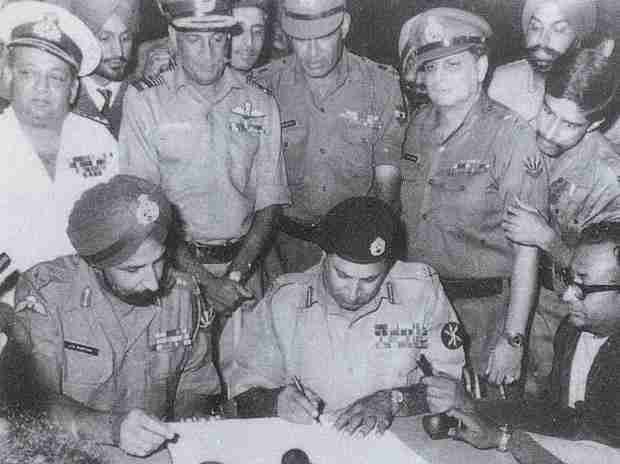Every year on 16 December—celebrated as Vijay Divas—we remember the brave soldiers of India’s Armed Forces, who fought for the Liberation of Bangladesh and pay homage to those who laid down their lives and who were wounded in action in this war.
For all those who lived in those times, the imprint is unforgettable. Television was just entering India, and the only source of information was the print media and radio, so most of us were glued onto the radio at all times. There was an air of anticipation in the air, an euphoria of great things to come, but wars are not the romantic notions that some people make out to be. This was however a just war, a war between Good and Evil, and while the world turned a blind eye to the genocide being carried out in East Pakistan, India could not remain an idle spectator.
For the people of East Pakistan, it was a war for freedom. No longer could the proud Bengalis take the humiliation of being treated as second-class citizens, despite being the majority population. And to suppress the Bengalis, the Pakistan Army unleashed a reign of brutality, rarely seen in modern times. The brutality surpassed the horrendous killing of Jews in the Second World War, yet the US and the West chose to turn a blind eye to the happenings in East Pakistan, simply because to them, Pakistan was a frontline state in the Cold War against the Soviet Union. Humanity was thus sacrificed on the altar of politics.
The Indian Armed Forces trained the Mukti Bahini and these young men and women fought the ruthless Pakistan Army for nine long months, suffering great hardships, but never deviating from their goal. The Bengali population too was mercilessly dealt with, and over three million people were killed and millions of women were violated. But that could not break the spirit of a proud people and they fought on and on and on.
In November, the Indian Army started actively aiding the Mukti Bahini in operations, and many operations were jointly fought before the formal declaration of war on the night of 3-4 December 1971. From then onwards, the writing was on the wall, but the war had to be concluded quickly, as the world was putting pressure on India for a ceasefire. The Indian political leadership under Indira Gandhi, however held firm, but the war had to be won quickly.
It was left to the brilliance of General Sagat Singh to open up a quick corridor to Dacca, by the amazing helilift of troops across the Meghna River, which put elements of the Indian Armed Forces within striking distance of Dacca on 9 December itself. The Pakistani commander, Lt Gen AAK Niazi now lost the psychological battle and was prepared to surrender on 10 December, but was persuade by Gen Yahya Khan to hold on as he was expecting the US and China to come to their aid. That did not happen and the formal surrender took place on 16 December at the Ramna Race Course ground and Bangladesh was born.
The Liberation War was India’s greatest victory in a millennia, with over 93,000 Pakistani soldiers surrendering to the combined forces of India and the Mukti Bahini. But the victory came at great cost. It is tragic that those Pakistanis who perpetrated war crimes were never tried for genocide. We must never allow that to happen again.
For India, it was a moment of rejuvenation. The nation came together as one, with political and military leadership of the highest order exhibiting great synergy. The geo-strategic landscape also changed, with Pakistan losing influence in the Bay of Bengal and the Pakistan navy being confined to their shores in the Arabian Sea. It is time now to recreate the spirit of 1971, and form strong regional groupings, for peace and prosperity in our times and for the future.


